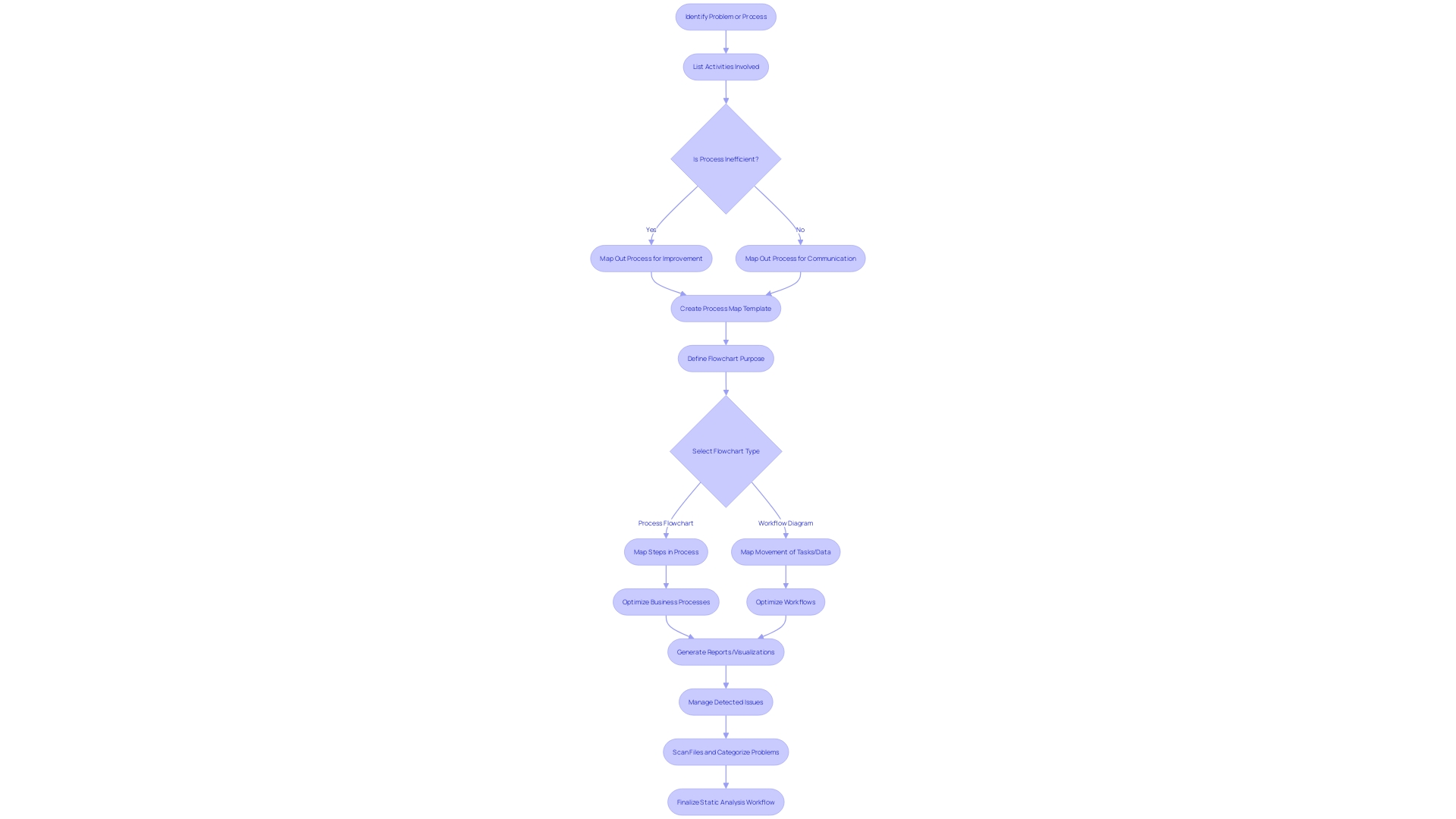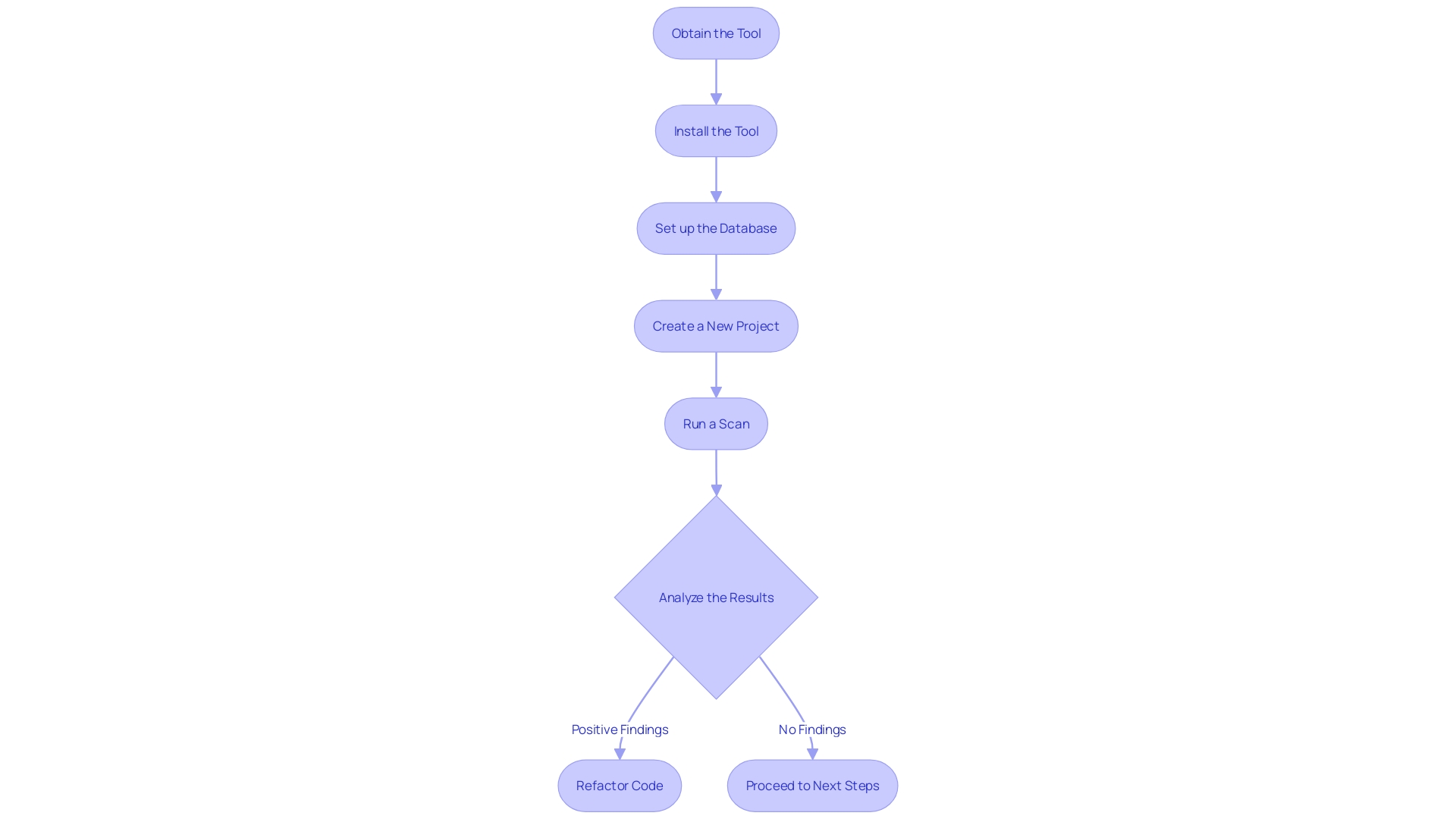Introduction
SonarQube: Elevating Code Quality and Efficiency
In today's fast-paced digital landscape, ensuring code quality is crucial for developers. Enter SonarQube, a comprehensive platform that empowers developers to achieve maximum efficiency and productivity through continuous code inspection. With SonarQube, developers can gain valuable insights into code health, detect bugs and vulnerabilities, and seamlessly integrate code analysis into their workflows.
By customizing rule sets and aligning with coding guidelines, teams can maintain and enhance software performance. In this article, we will explore the benefits of SonarQube, how static code analysis works with the platform, and the steps to set up SonarQube for static code analysis. Get ready to revolutionize your development process with SonarQube's powerful features.
What is SonarQube and Its Benefits
The platform, known as SonarQube, goes beyond being a mere tool; it provides a comprehensive approach to guaranteeing the utmost levels of quality in software through uninterrupted inspection. By leveraging a code analysis tool, developers gain invaluable insights into the health of their code, with features that cover everything from detecting duplications and complexities to ensuring maintainability. Here's how SonarQube elevates code quality:
-
Quality Measurement: It quantifies health using metrics for duplication, complexity, and maintainabilityâkey factors that influence the robustness and efficiency of applications.
-
Issue Identification: A vigilant sentinel, the software analysis tool, uncovers bugs, vulnerabilities, and code smells that could compromise software integrity if left unchecked.
-
CI/CD Integration: With seamless integration into Continuous Integration and Delivery pipelines, the tool incorporates analysis of the programming within the build and deployment workflow, guaranteeing that the quality of the programming is evaluated automatically and continuously.
-
Customizable Rule Sets: Every development team has its own set of practices and standards. This software accommodates this diversity by allowing teams to tailor rule sets to align with their specific coding guidelines and best practices.
Institutions like M&T Bank, with over a century and a half of history, have confronted the digital revolution by adopting standards like Clean Code to maintain and enhance software performance and maintainability. Similarly, TBC Bank has embraced an agile transformation, prioritizing the simplification of programming to accelerate growth and innovation. The banking sector's shift towards digital solutions emphasizes the need for tools that can protect the reliability of software that manages sensitive data and transactions.
Amidst the fast-paced evolution of technology and the release of newer versions of essential frameworks like Spring Boot and Spring Security, developers are called upon to write programs that are not just functional but also clear and maintainable. The capabilities of the software in question directly address the needs of modern development, where the clarity of codeâachieved through practices that prioritize readability and simplicityâis just as critical as its functionality.
How Static Code Analysis Works with SonarQube
Using a tool for static analysis involves a series of important actions. At first, a software tool meticulously scans each file within the project's source files to identify potential problems, guided by a set of predefined rules. These problems could vary from bugs and vulnerabilities to code smells and other signs of compromise in quality.
After the exploration stage, the software meticulously categorizes each detected problem, providing an in-depth breakdown of the severity, consequential impact, and precise location within the codebase. This level of detail allows developers to systematically address these concerns.
In the subsequent phase of problem management, a streamlined system is presented for monitoring and managing detected code issues. Developers can efficiently assign and prioritize issues for rectification, with a tool facilitating a collaborative environment through its centralized dashboard of all identified problems and their respective statuses.
The last step in the workflow involves the creation of comprehensive reports and informative visualizations. These resources serve to illuminate the codebase's condition and expose trends over time, equipping developers with a thorough comprehension of the codebase's health and identifying areas ripe for improvement.
As a real-world testament to the importance of such practices, M&T Bank, with a venerable 165-year history, has embraced the necessity of establishing Clean Code standards to maintain and enhance the performance of its software amidst the banking industry's shift towards an all-digital customer experience. The significance of robust analysis tools like SonarQube underscores the high stakes of security and regulatory compliance in this sector.
Furthermore, recent accolades in the static application security testing (SAST) market, as reported by Forrester's Q3 2023 Wave for Static Application Security Testing, highlight the pivotal role of these tools in seamlessly integrating into developers' workflows to detect and address security weaknesses expeditiously, with Synopsys' Coverity® earning high marks for its detection capabilities and integration into DevSecOps workflows.
This comprehensive approach to static code analysis not only aligns with the principles of Clean Codeâemphasizing readability, simplicity, and maintainabilityâbut also reflects an industry-wide commitment to software quality and security, a crucial concern for development teams across various sectors.

Setting Up SonarQube for Static Code Analysis
Integrating a code quality and security enhancement tool into your project requires a few simple steps. 'Firstly, obtain the most recent version from their official site and install it according to the provided guidelines, which can be done on either a local machine or a server.'.
Next, set up your instance for code quality analysis. You'll need to set up the database—be it MySQL, PostgreSQL, or Microsoft SQL Server—by entering the correct connection details.
Once the code quality tool is functioning smoothly, create a new project from the dashboard. This simply entails providing a project name and an identifier key.
The true magic occurs when you analyze your program. This purpose is served by Sonar Scanner, SonarLint, and various IDE plugins. Run a scan to sift through your code for any issues, vulnerabilities, or deviations from coding standards.
After the analysis, it's time to dive into the results. The tool presents detailed reports and visual aids to help you pinpoint and understand any problems.
By integrating SonarQube, companies like M&T Bank, with its rich heritage in community-focused banking, are able to maintain stringent quality standards and ensure compliance in a rapidly evolving digital landscape. Firms can avoid the costly and risky business implications of deploying faulty software by establishing Clean Code practices. These practices are not only about working code but about code that is clear, maintainable, and easily picked up by any developer, which is essential in the banking sector's digital shift.

Conclusion
SonarQube is a comprehensive platform that elevates code quality and efficiency through continuous inspection. It offers benefits such as code quality measurement, issue identification, CI/CD integration, and customizable rule sets. By leveraging SonarQube, developers gain valuable insights into code health and maintain software performance.
Utilizing SonarQube for static code analysis involves scanning files, managing issues, and generating reports. This approach aligns with Clean Code principles and reflects the industry's commitment to software quality and security.
Setting up SonarQube is straightforward. After installation and configuration, users can analyze code and access detailed reports. By integrating SonarQube, companies can maintain quality standards, ensure compliance, and avoid deploying faulty software.
In conclusion, SonarQube empowers developers to achieve efficiency and productivity. By utilizing its features, teams can enhance code quality, detect issues, and align with coding guidelines. SonarQube revolutionizes the development process and ensures high code quality in today's digital landscape.
Start optimizing your code with SonarQube today!
Frequently Asked Questions
What is SonarQube?
SonarQube is a platform that provides comprehensive code analysis to ensure the highest levels of software quality through continuous inspection. It helps developers by identifying code issues, measuring quality, and integrating with CI/CD pipelines.
What are the main features of SonarQube?
The main features of SonarQube include quality measurement, issue identification, CI/CD integration, and customizable rule sets to align with specific coding guidelines and best practices.
How does SonarQube help in measuring code quality?
SonarQube measures code quality using metrics that assess duplication, complexity, and maintainability, which are key factors influencing the robustness and efficiency of applications.
What types of problems can SonarQube identify in the code?
SonarQube can uncover various issues such as bugs, vulnerabilities, and code smells, which could compromise the integrity of software if not addressed.
Can SonarQube be integrated with existing development workflows?
Yes, SonarQube can seamlessly integrate into Continuous Integration and Delivery (CI/CD) pipelines, ensuring the code quality is automatically and continuously evaluated during the build and deployment processes.
Is it possible to customize SonarQube according to a development team's practices?
Yes, SonarQube allows teams to tailor rule sets to match their own coding guidelines and best practices, making it highly adaptable to different team requirements.
Why is SonarQube important for the banking sector?
For the banking sector, where software manages sensitive data and transactions, SonarQube is crucial for maintaining software reliability, performance, and compliance with security and regulatory standards.
How does static code analysis work with SonarQube?
Static code analysis with SonarQube involves scanning the project's source files to identify potential problems. It categorizes each issue, allowing developers to prioritize and manage them effectively. Comprehensive reports and visualizations are then created to help understand the codebase's health.
What steps are involved in setting up SonarQube for static code analysis?
To set up SonarQube, you need to install the latest version from their official site, set up the database, create a new project from the dashboard, and run a scan with Sonar Scanner, SonarLint, or IDE plugins to analyze your program.
What benefits does SonarQube offer to companies like M&T Bank?
SonarQube helps companies like M&T Bank maintain stringent quality standards and ensure compliance in a rapidly evolving digital landscape. By promoting Clean Code practices, firms can avoid deploying faulty software, ensuring the code is clear, maintainable, and easily understood by developers.




